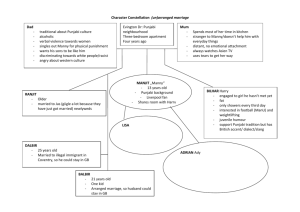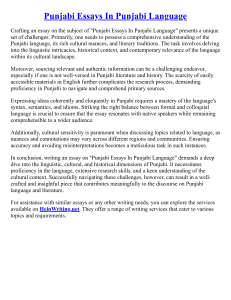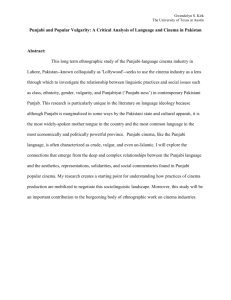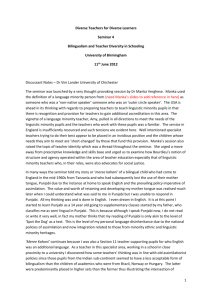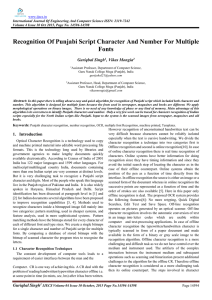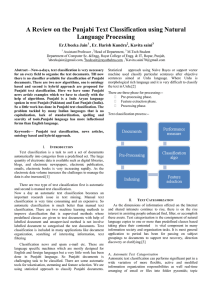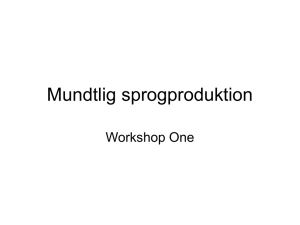If students are having difficulty the lesson plan could be adapted to
advertisement
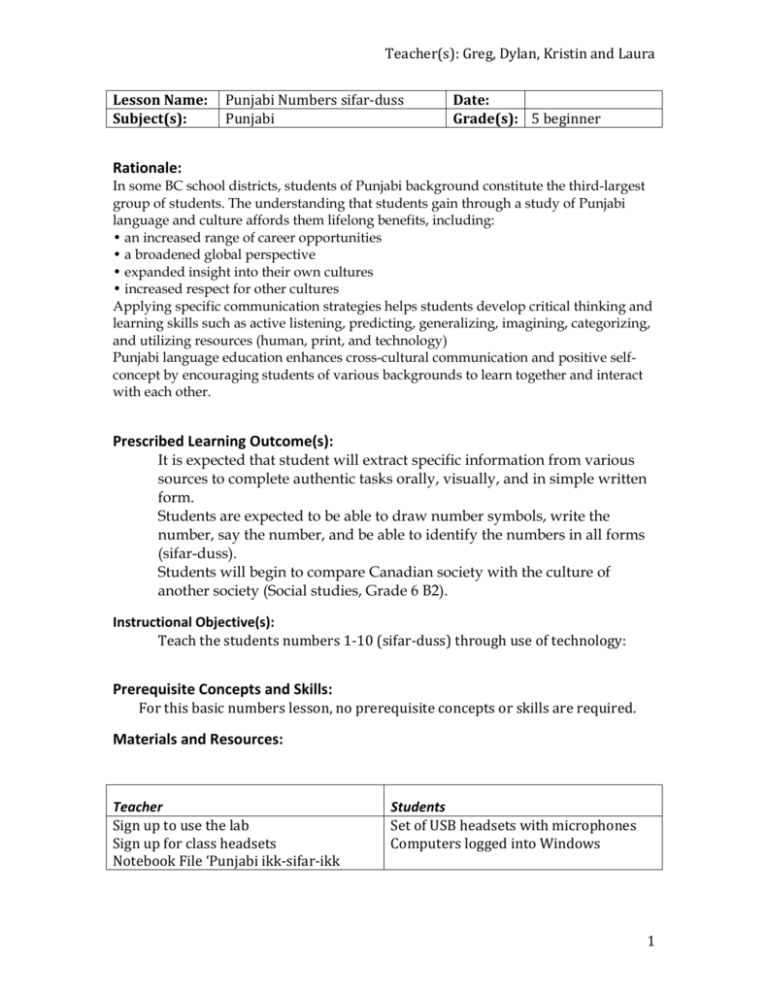
Teacher(s): Greg, Dylan, Kristin and Laura Lesson Name: Subject(s): Punjabi Numbers sifar-duss Punjabi Date: Grade(s): 5 beginner Rationale: In some BC school districts, students of Punjabi background constitute the third-largest group of students. The understanding that students gain through a study of Punjabi language and culture affords them lifelong benefits, including: • an increased range of career opportunities • a broadened global perspective • expanded insight into their own cultures • increased respect for other cultures Applying specific communication strategies helps students develop critical thinking and learning skills such as active listening, predicting, generalizing, imagining, categorizing, and utilizing resources (human, print, and technology) Punjabi language education enhances cross-cultural communication and positive selfconcept by encouraging students of various backgrounds to learn together and interact with each other. Prescribed Learning Outcome(s): It is expected that student will extract specific information from various sources to complete authentic tasks orally, visually, and in simple written form. Students are expected to be able to draw number symbols, write the number, say the number, and be able to identify the numbers in all forms (sifar-duss). Students will begin to compare Canadian society with the culture of another society (Social studies, Grade 6 B2). Instructional Objective(s): Teach the students numbers 1-10 (sifar-duss) through use of technology: Prerequisite Concepts and Skills: For this basic numbers lesson, no prerequisite concepts or skills are required. Materials and Resources: Teacher Sign up to use the lab Sign up for class headsets Notebook File ‘Punjabi ikk-sifar-ikk Students Set of USB headsets with microphones Computers logged into Windows 1 Teacher(s): Greg, Dylan, Kristin and Laura Lesson Activities Time 2 min Teacher Intro: Introduce the Notebook file and how to navigate through the activities. Make sure to tell the students to listen to Santosh’s video lesson. Explain the activities which the students will take part in. Student Students will go to the file and listen to the video lesson which teaches the numbers sifar-duss along with symbols, names and proper pronunciation Students will explore the variety of activities and make sure they are able to access them. 16 min Body: Walk around and assess the students with the activities as well as interact with them through their process of learning the numbers. Also be assessing students interest. Allow individual work time, but get students to demonstrate on SmartBoard. Students will practice drawing the number symbols, practice pronunciation of numbers, as well as recognition of the different symbols out of sequence through the activities on Notebook. 2 min Closure: fun quiz for students on what they learned Assess if the lesson was effective (quick quiz not for marks) Students draw in their telephone number and to leave the class they must tell the teacher their telephone number in Punjabi and show it on the screen. Organizational and/or Behavioral Management Strategies Bring the class together at the start of the day/lesson: introduce the aspect of learning through games and integration of technology. Tell students they can work together if they prefer. Conveniently all the materials are located on the students’ desktop. The teacher floats throughout the classroom engaging with the students as they work through the activities. Allow students to listen to Punjabi music to enhance Punjabi culture in the class. Assessment and Evaluation: At this level, assessment emphasizes student interest and participation, as well as on students’ enthusiasm and contributions. See how interested the class was in taking part in this lesson (should it be used again?) 2 Teacher(s): Greg, Dylan, Kristin and Laura Check before students leave if they have learned how to write numbers, draw symbols and pronounce numbers. Extensions/Adaptations: If during assessment students act engaged and interested, this lesson can act as a great framework to build upon with more complicated areas of the curriculum. Knowing numbers of a language are the basic facts necessary for being able to communicate in other areas of the curriculum such as time, and dates of the year. If students are having difficulty the lesson plan could be adapted to focus on one activity vs. trying to attempt all of them ie: just focus on drawing symbols and typing names. If students are finding this lesson to be extremely easy, they can challenge themselves to try and write extremely large numbers and develop their own mathematical questions mixing up all ways to represent the numbers. The lesson is short, only 20 minutes; the activities and adaptations provide more than enough to do for students to stay occupied. This model lends itself to other languages, including introductions to French or Spanish, which are both more common in the BC curriculum. Reflections (if necessary, continue on separate sheet): 3 Teacher(s): Greg, Dylan, Kristin and Laura 4
